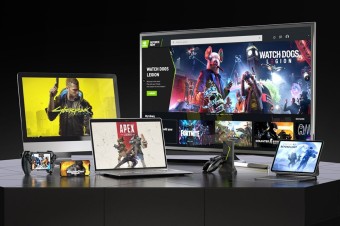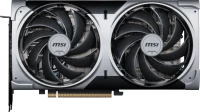Anti-crisis TOP: five optimal video cards in the first half of 2020
We independently test the products and technologies that we recommend.

Test participants
For this talent contest, we've rounded up five well-reviewed options: 3 variations of NVIDIA's SUPER cards and two Radeon XT cards. We will compare reference options in order to avoid the influence of the manufacturer on the result. It would not be very fair to push an ordinary card against an overclocker version with a markup of 15 - 20%.
- The GTX 1650 SUPER is an entry-level graphics card based on a stripped-down Turing TU116 die with 1280 CUDA cores. The video buffer is represented by 4 GB of GDDR6 memory with an effective frequency of 12 GHz, and the interface width is 128 bits. In terms of performance, it would be more correct to call it a stripped-down version of the GeForce GTX 1660, rather than an improved GeForce GTX 1650.
- RX 5500 XT is the youngest video card in the AMD lineup, built on the Navi 14 chip with 1408 RDNA architecture stream processors, 32 render units (ROPs) and 88 texture units (TMUs).
- The GTX 1660 SUPER is a mid-range card based on the full 12nm Turing TU116-300 core with 1408 CUDA cores, 88 texture units (TMUs) and 48 render units (ROPs). Like the younger GTX 1650 SUPER, it uses advanced GDDR6 memory.
- The RX 5700 XT is the top card in the current Radeon lineup based on the older Navi 10 chip and GDDR6 memory. The card's signature features were the use of new AMD FidelityFX technologies, which sharpens fine details in the frame without affecting FPS, and Radeon Anti-Lag to reduce input lag.
- The RTX 2060 SUPER is a radically upgraded version of the regular RTX 2060, which is based on the TU106 graphics core and has 256 more CUDA cores, plus 16 texture units, 4 RT cores, and 32 Tensor cores.
Testing in games
 |
Let's make a reservation right away that 4K gaming is never a necessity, so we will squeeze all the juice out of the test five with familiar games in traditional Full HD resolution and Ultra settings. To get a more believable picture, we will take as a basis not the peak, but the average number of FPS. On this, in general, everything. Let's quickly introduce our test bench and let's go to the comparisons.
test stand
- Motherboard: Gigabyte X570 AORUS ELITE ;
- Processor: AMD Ryzen 5 Matisse 3600 BOX Price from 2 499 up to 3 769 ₴;
- RAM: HyperX Fury Black DDR4 2x8Gb HX432C16FB3K2/16 ;
- Storage device: Gigabyte M.2 NVMe SSD GP-GSM2NE3128GNTD 128 GB .
 |
 |
 |
 |
 |
 |
As you can see, the younger GTX 1650 SUPER and RX 5500 XT still perform well in games even at ultra and Full HD. Below the critical mark of 30 FPS, the RX 5500 XT only once failed - it happened during the RDR2 tests and even 8 GB of video memory did not help. And this is a little strange, because the game is known for being better friends with "red" rather than "green" video cards. But we have what we have. If we talk about a comfortable game, then it is better to go down from Ultra to High settings. In this case, the game becomes more forgiving to the hardware, while the quality of the picture suffers very little and concerns mainly subtle details.
At the other end, as expected, are the RTX 2060 SUPER and RX 5700 XT. Moreover, with the clear leadership of the latter, which is capable of delivering at least 60 FPS even in the most demanding games, not only in Full HD, but also at 2K resolution. It is interesting that for both cards in stores now they are asking plus or minus $500. At the same time, in terms of power, the RX 5700 XT is even closer to the RTX 2070 SUPER, which costs almost one and a half times more.
Well, in the middle of the table, as expected, was the GTX 1660 SUPER with 6 GB of video memory. This is still the main contender for the title of optimal gaming card, which can handle any AAA titles quite confidently. Another question is that the requirements for the amount of video memory are growing day by day, and the next generation in the face of the PlayStation 5 and Xbox Series X is on the threshold, and it is not entirely clear how much more resources the GTX 1660 SUPER will have. It seems that for a year and a half you can definitely be calm, then most likely you will either have to upgrade or switch from the full "Ultra" to more optimal and sparing graphics settings.
And what is more profitable?
 |
For the sake of sports interest, we decided to choose not only the most powerful, but also the most profitable option. Crisis, after all. To do this, we will simply display the average FPS in the tested games for each card, then look at the average price of the model and try to figure out how many dollars on average one FPS costs us.
- GTX 1650 SUPER: $196 average bill, 45 average FPS,
- RX 5500 XT: $233 average bill, 45 average FPS
- GTX 1660 SUPER: $278 average bill, 55 average FPS
- RX 5700 XT: $482 average bill, 76 average FPS
- RTX 2060 SUPER: $433 average bill, 67 average FPS
Of course, mathematicians would hit us with a ruler on the hands for such purity of the experiment, but this is rather pure fun. You don't have to be a great expert on video cards to understand that you always have to pay extra for extra power, and top-end cards are not the best buy in terms of profitability. However, in this case we are talking about plus or minus the middle class, so such an experiment has the right to life. Well, stop talking, let's see how many dollars we need to pay for 1 FPS in each case:
- GTX 1650 SUPER: $4.35 per FPS
- RX 5500 XT: $5.17 per FPS
- GTX 1660 SUPER: $5.05 per FPS
- RX 5700 XT: $6.34 per FPS
- RTX 2060 SUPER: $6.46/FPS
Conclusion
 |
All things considered, in a new entry-level gaming PC, we would definitely go with the GTX 1650 SUPER. It will allow you to play many modern toys, if not at maximum, then at high graphics settings. But you will immediately have to mentally prepare for a future upgrade, even despite effective compression algorithms, 4 GB of video memory will become a bottleneck in the future. But right now it's a good option for Full HD at medium-high graphics settings. The main thing is to have a supply of RAM.
Either the GTX 1660 SUPER or the RX 5700 XT flies into the optimal PC. The first is more profitable, the second has just the right level of power to comfortably play on High / Ultra and Full HD in almost any gaming blockbuster in the next couple of years. RTX 2060 SUPER at almost the same price lags behind RX 5700 XT by 10-15%. At the same time, it supports hardware ray tracing, consumes less energy and does not heat up so much that for someone it will be more important than a difference of several FPS.
Again, please note that this average FPS experiment is far from pure. The sample included only 6 games, we calculated the average check for the five most popular models, and the prices are not static, and after the start of sales or the release of new video cards, the price dynamics may change significantly. Therefore, it is better to consider all this rather as an additional guideline for those gamers who do not like to spend money in vain.
Articles, reviews, useful tips
All materials






























